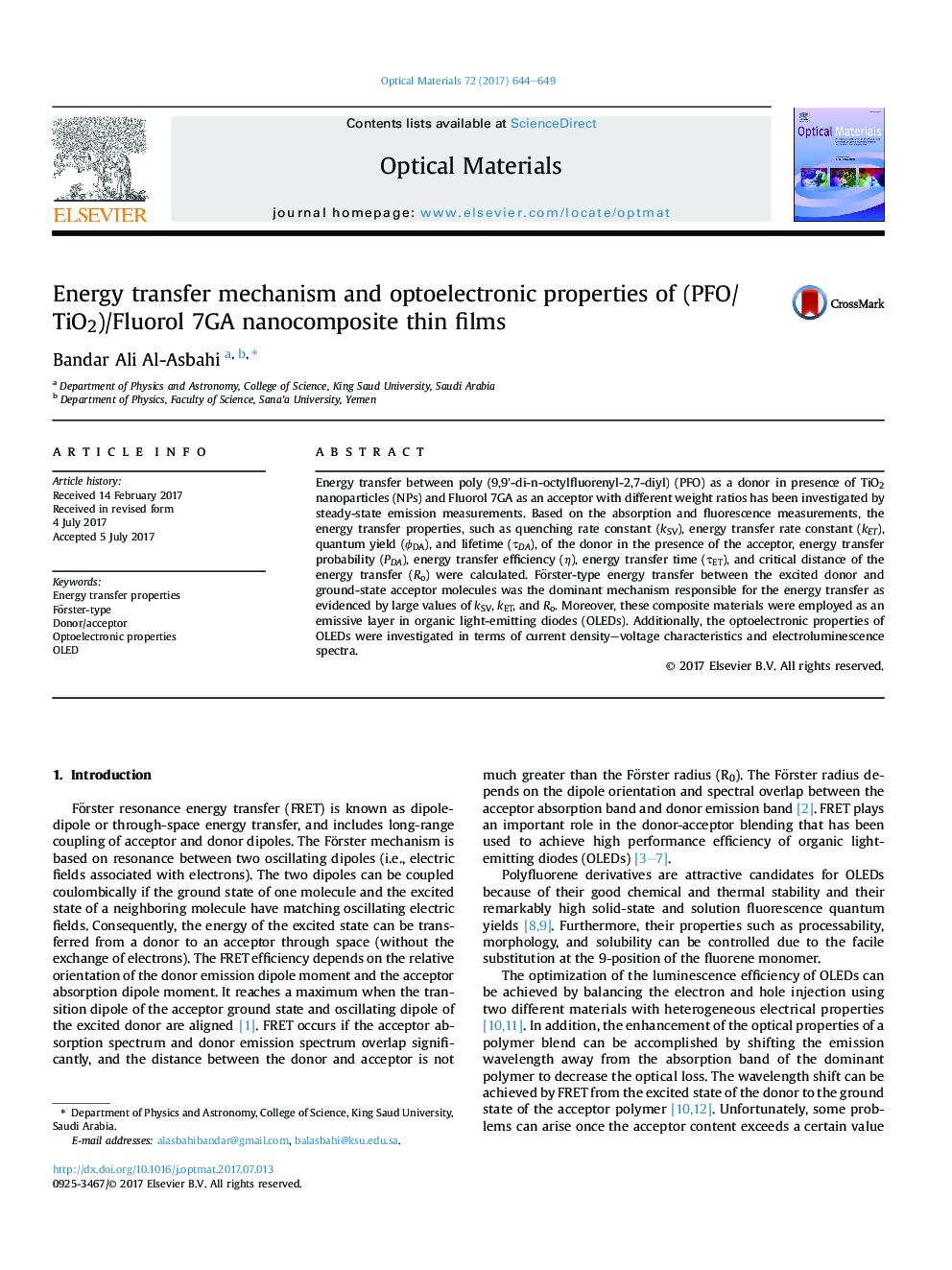| Article ID | Journal | Published Year | Pages | File Type |
|---|---|---|---|---|
| 5442525 | Optical Materials | 2017 | 6 Pages |
Abstract
Energy transfer between poly (9,9'-di-n-octylfluorenyl-2,7-diyl) (PFO) as a donor in presence of TiO2 nanoparticles (NPs) and Fluorol 7GA as an acceptor with different weight ratios has been investigated by steady-state emission measurements. Based on the absorption and fluorescence measurements, the energy transfer properties, such as quenching rate constant (kSV), energy transfer rate constant (kET), quantum yield (ÏDA), and lifetime (ÏDA), of the donor in the presence of the acceptor, energy transfer probability (PDA), energy transfer efficiency (η), energy transfer time (ÏET), and critical distance of the energy transfer (Ro) were calculated. Förster-type energy transfer between the excited donor and ground-state acceptor molecules was the dominant mechanism responsible for the energy transfer as evidenced by large values of kSV, kET, and Ro. Moreover, these composite materials were employed as an emissive layer in organic light-emitting diodes (OLEDs). Additionally, the optoelectronic properties of OLEDs were investigated in terms of current density-voltage characteristics and electroluminescence spectra.
Related Topics
Physical Sciences and Engineering
Materials Science
Ceramics and Composites
Authors
Bandar Ali Al-Asbahi,
